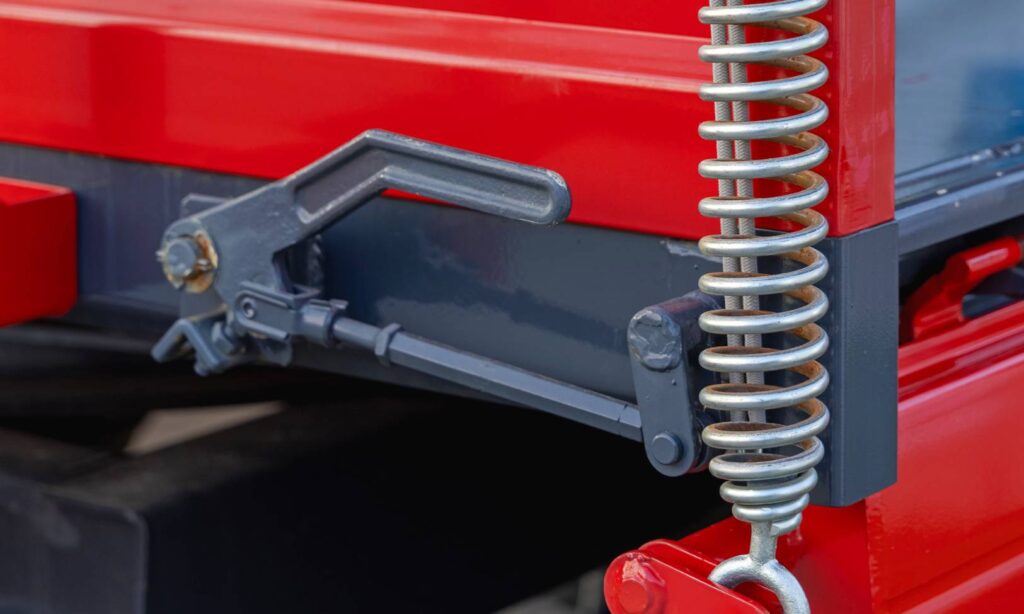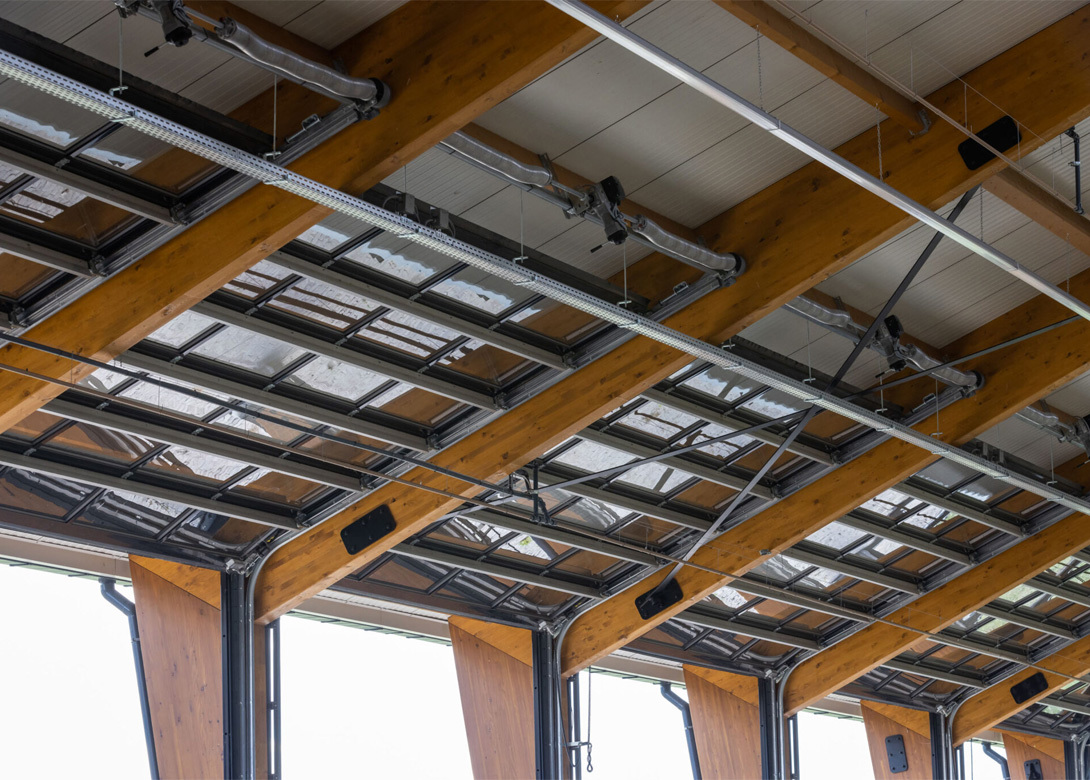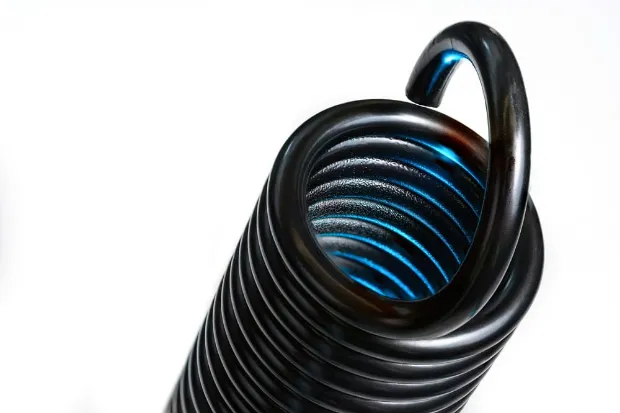
In this article, you will find everything you need to know about tension springs from the definition of a tension spring to the materials used, as well as about key terms, the manufacturing process, common uses and innovations in smart materials and future trends.
So, if you want to know how tension springs work and discover their surprisingly wide range of real-life applications, read on - we’ve got it covered. Let’s extend your knowledge and explore the dynamic world of tension springs.
Tension springs, also known as extension springs, are helical springs designed to operate with a tension load. They absorb and store energy by resisting a pulling force, and typically feature hooks, loops, or end coils for attachment purposes. They are used in garage doors, trampolines, electric guitars, seat belts, agricultural machinery and more.

Tension springs work based on Hooke's Law, which states that the force required to stretch or compress a spring is proportional to the distance it is stretched or compressed. This means that as it is stretched further, the amount of tension in the spring increases.
The initial tension must be overcome before a tension spring extends, this is the force that keeps coils wound together tightly before external forces or loads are applied. A tension spring with coils set to a higher initial tension will produce a stronger spring and this is set during the manufacturing process.
The materials used for tension springs vary based on their application requirements, including environmental conditions and load demands. Commonly, high-carbon steel, stainless steel, and alloy steels are utilised for their robustness and corrosion resistance. For specific needs, materials such as phosphor bronze, beryllium copper, and even exotic alloys can be selected to enhance durability, conductivity, or non-magnetic properties.
There are various types of tension springs with different end types. The simplest forms come with machine hooks, extended hooks, or swivel hooks, while more complex variations include reduced ends, threaded inserts, or loops. Custom springs are also developed for unique applications and are used in various industries such as renewables, transport, construction, motorsport, rail, agriculture, quarry and mining, robotics and more.

A tension spring works by resisting a pulling force, it absorbs and stores energy as it is extended. When stretched to a certain length, it creates a return force and brings two components back to their original position. In an unloaded state, the coils of a tension spring touch.
Hooke’s Law, along with a variety of other terminology can support you to understand tension spring mechanisms. Here is a short, useful list of key terminology:
There are many factors to consider in tension spring design and development at various stages in the manufacturing process. Let’s look at these factors in more depth, along with the steps involved in the manufacturing process.
Engineers must consider factors such as material type, coil diameter, spring length, and initial tension requirements in tension spring design. These elements are critical in ensuring that the spring can withstand the operational forces without failing and perform its intended function effectively. The design phase also involves calculating the spring constant and stress distribution to predict how the spring will behave under load.
The manufacturing process begins with selecting the appropriate wire type and diameter for the tension spring. The wire is then fed into machinery, where it is coiled into the desired shape. After coiling, springs are cut and trimmed to the desired length and hooks or loops are added to ends as required. Springs then undergo heat treatment to enhance their strength and durability, and coatings such as nickel coating and galvanised steel are added to increase corrosion resistance. Finally, springs are inspected and tested to ensure they meet the required specifications.
Tension springs are integral components across various sectors, including automotive, for retracting seat belts and operating garage doors; electronics, in devices like keyboards and appliances; and construction, where they are used in power tools, heavy plant machinery and even architectural icons such as the 02 arena. They are also used in motorsport, for throttle linkage systems and suspension systems as well as in mining for vibrating screens and feeders, which separate different-sized materials. As you can see, tension springs are used in a variety of applications from small household items to larger industrial machinery.
Innovations in tension spring technology focus on material advancements, design optimisation, and manufacturing processes to enhance performance, longevity, and environmental sustainability. For example, the Alcomex innovated Quattro Spring has birthed a new chapter for tension springs in garage doors. This tension spring set is extremely compact and allows companies to sell pre-tensioned hardware sets to customers, which saves time, money and space.
Other future trends may include:
These innovations aim to meet the evolving needs of industries requiring more efficient, reliable, and customisable spring solutions.

Overall, tension springs are highly versatile components used in multiple applications in a wide range of industries. They operate with a tension load, creating a return force when stretched to a certain length; the higher their initial tension, the stronger the tension spring.
So, what did you learn today? Can you remember the key terminology related to tension springs? Comment below - we would love to hear your thoughts.
Here at Lesjöfors Springs, we design, develop and manufacture world-leading tension, torsion and compression springs. You can find out how to order a custom spring and view our value-added services via our website. Or you can read our professionally curated glossary page to learn more about spring terminology today.
We are world-leading heavy duty spring manufacturers, delivering the greatest expertise in compression, torsion and tension spring manufacturing.
Delivering impact to every industry, we guarantee spring solutions that will optimise your performance and success.

